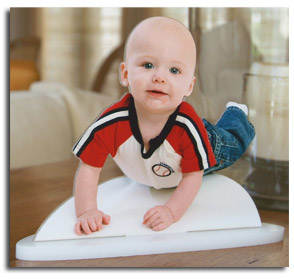Her answer is a qualified “yes.” It’s obviously a personal choice—and nothing against photographers who do this style of work or folks who use them—but for me, I find that the everyday snaps I make of my family doing what they do are a much more cherished documentary of our lives than any posed studio portrait. Kids running down the hall, out of focus hands and faces grabbing for the lens, asleep in bed, cooking dinner—these are the moments life is made of.
Studio portraits are really, really nice mug shots. They can be beautiful. I even shoot photos like this myself. But nothing beats a large collection of everyday shots of people doing everyday things to tell a real story about a life—regardless of any perceived difference in quality.
… Continue reading Amy asks, “Are studio photographs of your kids worth it?”

 Mpix.com has a neat new product called
Mpix.com has a neat new product called  The gang over at
The gang over at 






